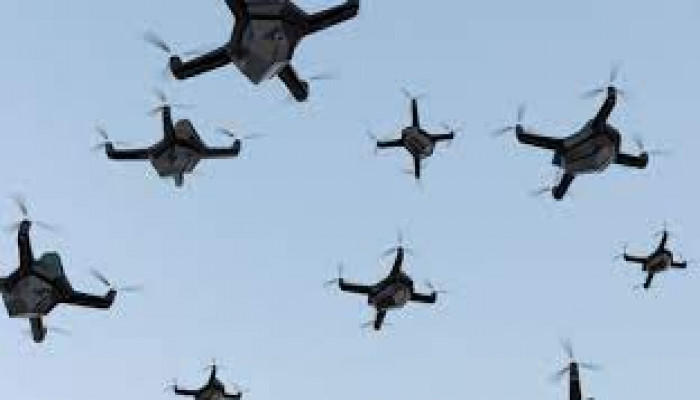China develops multi-functional swarm drones capable of mid-air separation
- In Reports
- 10:58 PM, Mar 19, 2024
- Myind Staff
Chinese researchers have announced the creation of a groundbreaking war drone, unlike any previously witnessed on the battlefield. Initially appearing similar to a standard Chinese DJI multirotor used by consumers, this drone possesses a unique capability: upon entering target airspace, it can swiftly divide into two, three, or even six smaller drones, adapting to the demands of the combat situation. Each smaller drone is equipped with a single blade but retains the ability to hover and maneouver like conventional drones. Furthermore, they are interconnected, enabling communication and the execution of specific tasks such as command, reconnaissance, tracking, and even launching attacks. These drones collaborate seamlessly to accomplish mission objectives.
The research, led by Professor Shi Zhiwei from Nanjing University of Aeronautics and Astronautics, is a breakthrough in air separation technology.
For years, teams around the world have attempted to devise a practical and efficient method for the controlled separation of drones mid-air. The technology could change the battlefield. When a drone swarm appears on enemy radar screens, air-defence systems allocate anti-drone weapon resources and means based on the number of drones.
However, if the drone swarm suddenly increases in size, not only will the defence system be overwhelmed, but it poses a psychological shock that could hamper effective resistance from enemy commanders and soldiers. Progress in this technology has been slow because flight efficiency is significantly decreased when traditional drones are combined.
In a peer-reviewed paper published in Acta Aeronautica et Astronautica Sinica journal last month, Shi’s team said it had overcome this challenge. The drone combination, it said, boasted a flight efficiency nearly twice that of a similar-sized multirotor drone.
When these small drones were united, they could fly faster and further than they could alone. Even after separation, their flight efficiency remained more than 40 per cent higher than that of traditional small drones – the first demonstration that combined drones could outperform single drones in any flight state.
China is the world’s leading designer and producer of drones, showing excellent price and energy efficiency. However, “combined design and air-separation technology provides the possibility to further enhance the effectiveness of drone use”, Shi and his colleagues wrote in the paper.
The inspiration for Shi’s team came from an unlikely source: the maple seed. Long admired by botanists for its ability to be carried vast distances by the wind, the maple seed’s unique structure – a wing-like cotyledon that rotates around the seed – provides lift and allows it to hover or even ascend in windy conditions.
In 2012, researchers at Lockheed Martin, a leading US arms manufacturer, drew inspiration from the maple seed to develop a drone with a constantly rotating lens capable of stable target tracking and high-definition imaging.
However, limited by its energy and payload capacity, it could not fly for extended periods or tackle complex tasks alone. The US team envisioned large aircraft delivering these drones, but the cost and risk of being shot down proved prohibitive.
While other Western teams have since developed similar machines, none have reported large-scale practical applications.
Image Source: Bharat Shakti







Comments